- About Us
- Columns
- Letters
- Cartoons
- The Udder Limits
- Archives
- Ezy Reading Archive
- 2024 Cud Archives
- 2023 Cud Archives
- 2022 Cud Archives
- 2021 Cud Archives
- 2020 Cud Archives
- 2015-2019
- 2010-2014
- 2004-2009
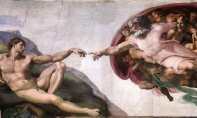 |
Mirrors of the Self: The Common Thread between Art and Religion |
Art and Religion seem highly incompatible to many. The masses believe that these two institutions and the vast worlds of knowledge and experience in which 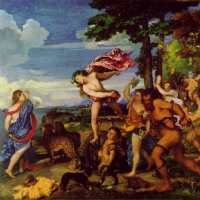 they educate their adherents and disciples, have nothing whatsoever to do with each other. The question is simple: “Do Art and Religion have anything in common, and if so, what is this common thread?” The answer is not so simple; I will discuss it here at some length.
they educate their adherents and disciples, have nothing whatsoever to do with each other. The question is simple: “Do Art and Religion have anything in common, and if so, what is this common thread?” The answer is not so simple; I will discuss it here at some length.
Religion is the social construction that elaborates upon the individual and communal worship of deity. Religion puts down dogmas of a faith and the moral codes of how best to live a proper existence. The germ of religion is faith in a unified, transcendent being or reality. Logic and reason has its place in religion but the spiritual, emotional experience that is faith is the crux of true religion. The mystic experience that many find through a deep commitment to their spirituality, outside of religion, intensifies and substantiates this faith. This mystic conversion reveals the cosmic character of humankind’s relationship with God or the Divine that permeates all Creation. For the few graced by God to have a mystic encounter, a new, almost ineffable and inexplicable understanding of the world as well as a relationship with God and this world is born. Buried deep beneath all the archaic, stringent dogma and moral laws that saddle and corrode Western religion in particular, one can find what happens to be the true nature of religion. The true nature of religion, as I discussed elsewhere, is in the mystic experience.
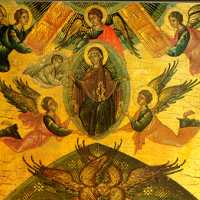 Mystic revelation, in brief, shows human beings that life is but a moment in the eternal life of their soul temporarily embodied in an impermanent form with a purpose. Life is a test; its meaning is in its transcendence. God gives the soul human life as a test of endurance through pain and pleasure, but also for transcendence and reunion with Himself through the liberation of death. The test is in whether the embodied soul, overpowered by the flesh, desires more passionately the futile, fleeting pleasures of this material body, or to reunite with God, knowing its true nature is infinite and wholly divine, and that its origin and permanent bliss is elsewhere. All forms and sects of mysticism assert that human beings have no self, that the ego or I-centeredness of human existence is an illusion that separates us from becoming one with the Divine and having a deeper experience of that divinity through all Creation. This illusory self causes us attachment to the materiality of existence that, along with the constant change that is the nature of all things, causes us pain and desire. This knowledge, and putting this knowledge into action, is the actual meaning of a mystical existence. One puts this knowledge into action by erasing the false sense of a self/ego in acts of self-sacrifice. Committed self-sacrifice enables humans to transcend the corrupt notion of an ego, and become closer to God and the true nature of their soul enabling the eventual reunion between the two in death. Christ above all other figures throughout history and civilization was the one to expose this mystic foundation of religion and all human existence in his extreme version of self-sacrifice in the Crucifixion.
Mystic revelation, in brief, shows human beings that life is but a moment in the eternal life of their soul temporarily embodied in an impermanent form with a purpose. Life is a test; its meaning is in its transcendence. God gives the soul human life as a test of endurance through pain and pleasure, but also for transcendence and reunion with Himself through the liberation of death. The test is in whether the embodied soul, overpowered by the flesh, desires more passionately the futile, fleeting pleasures of this material body, or to reunite with God, knowing its true nature is infinite and wholly divine, and that its origin and permanent bliss is elsewhere. All forms and sects of mysticism assert that human beings have no self, that the ego or I-centeredness of human existence is an illusion that separates us from becoming one with the Divine and having a deeper experience of that divinity through all Creation. This illusory self causes us attachment to the materiality of existence that, along with the constant change that is the nature of all things, causes us pain and desire. This knowledge, and putting this knowledge into action, is the actual meaning of a mystical existence. One puts this knowledge into action by erasing the false sense of a self/ego in acts of self-sacrifice. Committed self-sacrifice enables humans to transcend the corrupt notion of an ego, and become closer to God and the true nature of their soul enabling the eventual reunion between the two in death. Christ above all other figures throughout history and civilization was the one to expose this mystic foundation of religion and all human existence in his extreme version of self-sacrifice in the Crucifixion.
Religion, then, is the highly organized institution that details, but also perverts with its human corruption, the mystic basis of all life wherein the soul that lives embodied yearns and struggles to reunite in its fundamental, infinite 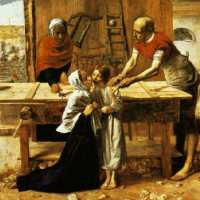 nature with God through self-effacement. This should be, from its inception, the purpose and goal of all religion: to teach human beings that they need to surrender the fallacy of the ego through self-sacrifice and forego the belief that the ego and all sensory objects are permanent. This then will lead to the liberation of death in which the soul will experience sublime annihilation so that the spirit can be renewed, becoming once again wholly infinite and pure, untainted by the flesh.
nature with God through self-effacement. This should be, from its inception, the purpose and goal of all religion: to teach human beings that they need to surrender the fallacy of the ego through self-sacrifice and forego the belief that the ego and all sensory objects are permanent. This then will lead to the liberation of death in which the soul will experience sublime annihilation so that the spirit can be renewed, becoming once again wholly infinite and pure, untainted by the flesh.
Art, what many, including myself, consider the secular version of religion, finds its common thread with the latter in its perception of the self and how it represents or depicts its meaning to its audience. Through its method and development, the creative process transforms the images and ideas on fire in the imagination and the passions and emotions that pulse through the heart and spirit into the work of art that seems real. It is real insofar as the work of art is a concrete form that appeals to the senses, the heart, mind, and soul. Paradoxically, the work of art is artifice, it is an illusion; it is artificial or a lie because what goes into the creation of the work of art becomes transfigured in the name of something greater. What you see on a canvas, a sculpture, or when you read a poem, play, story, or novel, is not real; it is a fabrication. The artist or author chisels away at the truthfulness of the elements that have created the work in the objective to create “Art”. The artist’s thoughts and ideas, his emotions, and his passion 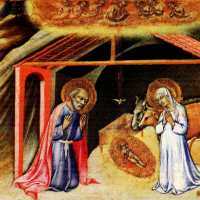 for his subject that is present in his creativity are each real, but downplayed and diluted in the final creation that is a lie. Art is a material body, it is a medium whose surface is consciously and deliberated created; it becomes an edited performance, so to speak. The surface is an illusion; it is not necessarily spontaneous, though the ideas and feelings that spawned the creation may have been.
for his subject that is present in his creativity are each real, but downplayed and diluted in the final creation that is a lie. Art is a material body, it is a medium whose surface is consciously and deliberated created; it becomes an edited performance, so to speak. The surface is an illusion; it is not necessarily spontaneous, though the ideas and feelings that spawned the creation may have been.
If the work of art is all a lie, then what lies beneath the surface? In the depths is the key to an understanding of existence. Art is at once both surface and symbol as Wilde had it. In translating the emotions and ideas that the artist experiences into a work of art, he enables his work to become universal and timeless. Thus, the masses are able to comprehend their own experience in the act of reading a poem or story, viewing a painting, or hearing a musical piece or vocal performance. Art transforms the personal and individual into the global and infinite. It does this through the act of the artist’s self-erasure. Hence, the relationship between Art and Religion is one whose common thread is in the mystic comprehension and experience of the world. Art may be a lie, an artifice, and illusion, but it is such in the hopes of attaining a higher spiritual goal. All creative acts wherein the artist transforms his own immediate experiences and beliefs into works of art that erase or conceal him in the presence of his audience or reader are true, priceless Art. The purpose of Art is to hold a mirror up to the reader or spectator so that they may see their real selves, and ultimately, when the leap of faith is possible, to show them that there is no self. Art hopes to show them that it too, just like their selves, is all a lie, an illusion.
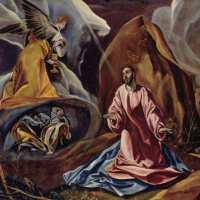 Just as with Religion, the goal of Art has its foundation in the mystical experience of self-revelation, but the paradox is that the revelation is of no self, of the illusory concept of the ego. Art and Religion are God’s gift to humanity so that all of us can find ourselves, and find true meaning in this life. The true meaning is that this life is a blessing and a test, for celebration and revelation. In its transience, the only permanent reality is our infinite spirit and God to whom we must transcend and reunite in fulfilled desire. We must transcend the material nature of existence through the flesh, in sacrificing our attachment to the sensuality of the flesh and wisely accepting the illusion of the self. Only then, in knowing that pleasure and pain is momentary and must be endured, but never desired more than redemption and transcendence can one surrender the soul to God in the spirit of sublime annihilation that will return the soul to its infinite nature of pure consciousness.
Just as with Religion, the goal of Art has its foundation in the mystical experience of self-revelation, but the paradox is that the revelation is of no self, of the illusory concept of the ego. Art and Religion are God’s gift to humanity so that all of us can find ourselves, and find true meaning in this life. The true meaning is that this life is a blessing and a test, for celebration and revelation. In its transience, the only permanent reality is our infinite spirit and God to whom we must transcend and reunite in fulfilled desire. We must transcend the material nature of existence through the flesh, in sacrificing our attachment to the sensuality of the flesh and wisely accepting the illusion of the self. Only then, in knowing that pleasure and pain is momentary and must be endured, but never desired more than redemption and transcendence can one surrender the soul to God in the spirit of sublime annihilation that will return the soul to its infinite nature of pure consciousness.
